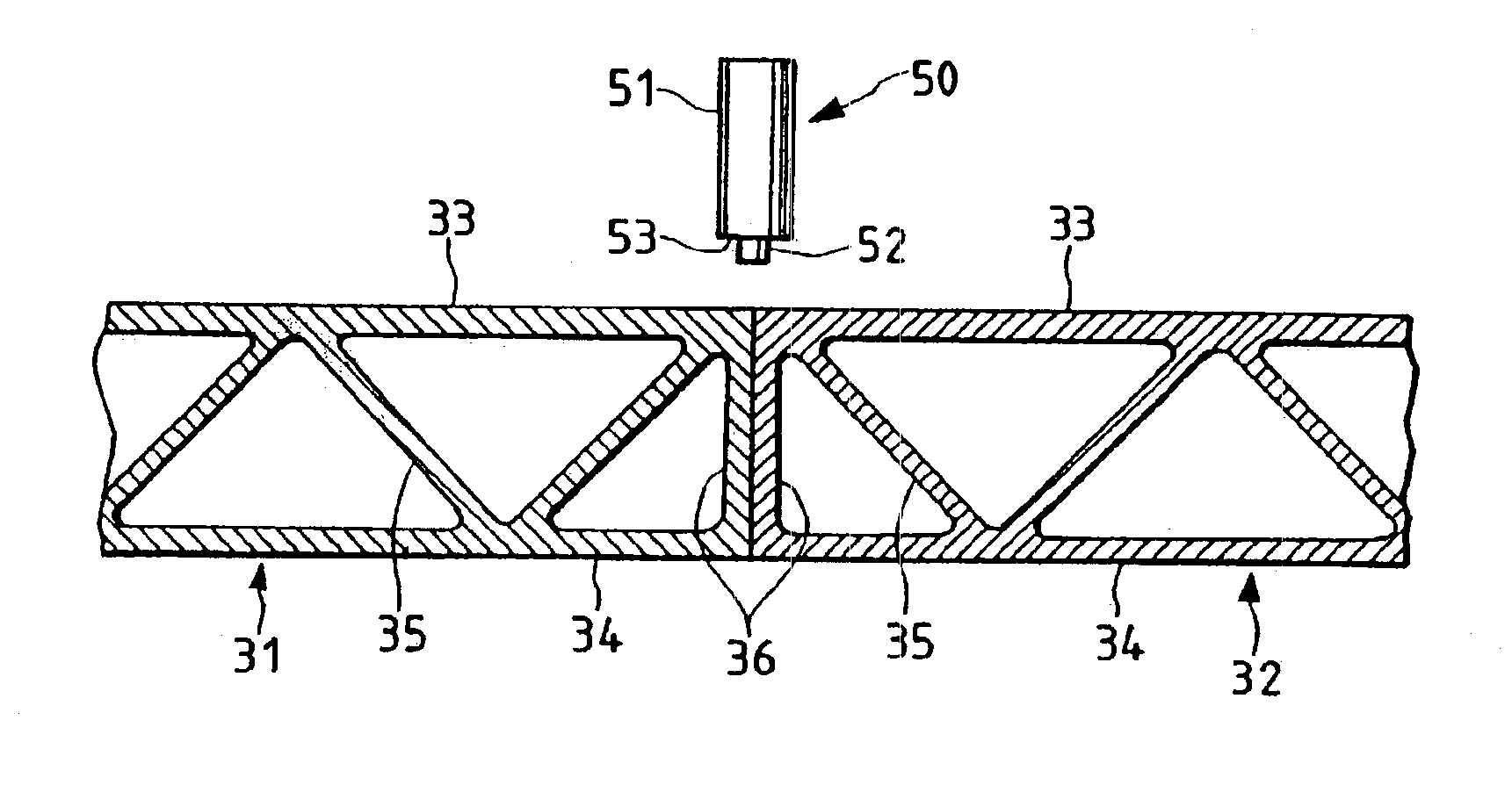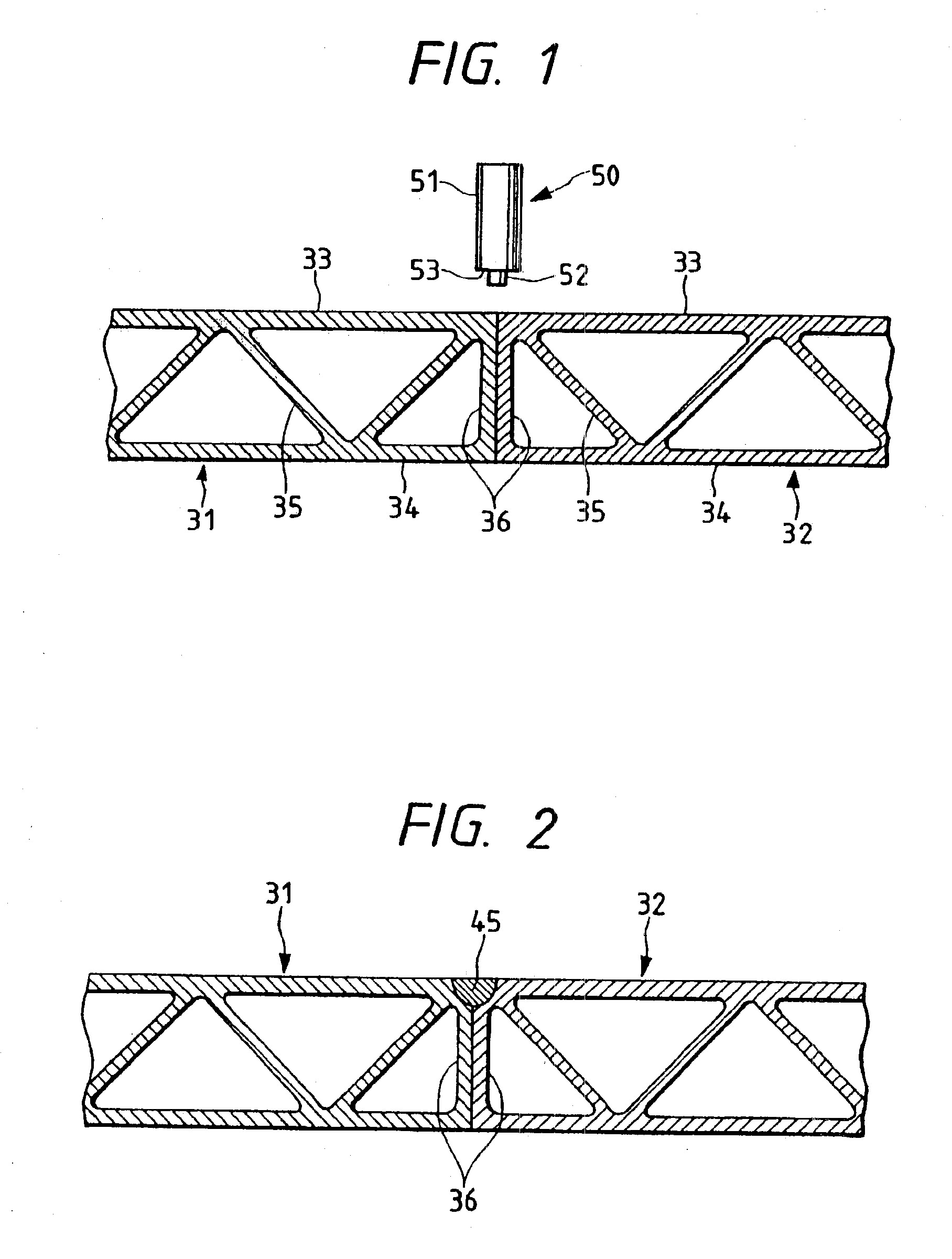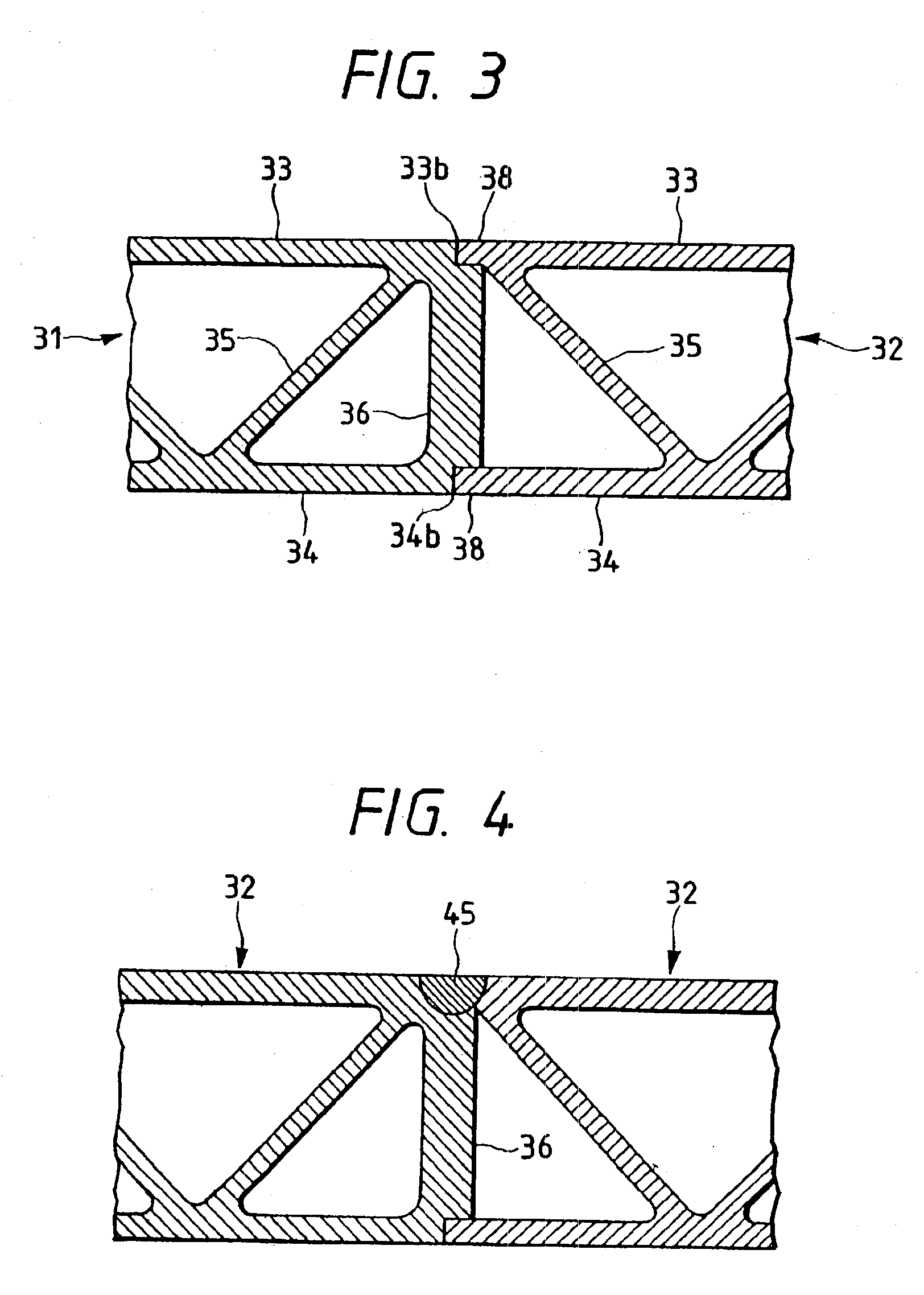Friction stir welding method of opposite sides of panels
a technology of friction stir and opposite sides, which is applied in the direction of manufacturing tools, transportation and packaging, and other domestic objects, can solve the problems of joint deformation and inability to produce satisfactory welds, and achieve the effect of short time and little deformation
- Summary
- Abstract
- Description
- Claims
- Application Information
AI Technical Summary
Benefits of technology
Problems solved by technology
Method used
Image
Examples
Embodiment Construction
The embodiment shown in FIG. 1 has a joint configuration of the abutting type between hollow members 31, 32 which are in the form of panels. The hollow members 31, 32 have vertical plates 36, 36 at their ends in the width direction. Before the welding, the vertical plates 36, 36 are disposed immediately beneath a rotary tool 50. The vertical plates 36, 36 are opposed to and in contact with each other. If they are spaced apart, the distance is small and approximately 1 mm. On the extension of the interface between the vertical plates36, 36 lies the center of a projection 52. The vertical plates 36, 36 have a stiffness which is sufficiently strong to sustain the downward force mentioned earlier. The vertical plates 36 are perpendicular to two plates 33, 34 in each panel. The hollow members 31, 32 are formed by extruding an aluminum alloy. The upper and lower faces of the hollow member 31 are flush with the corresponding upper and lower faces of the hollow member 32. That is, the hollo...
PUM
| Property | Measurement | Unit |
|---|---|---|
| distance | aaaaa | aaaaa |
| velocity | aaaaa | aaaaa |
| thickness | aaaaa | aaaaa |
Abstract
Description
Claims
Application Information
 Login to View More
Login to View More - R&D
- Intellectual Property
- Life Sciences
- Materials
- Tech Scout
- Unparalleled Data Quality
- Higher Quality Content
- 60% Fewer Hallucinations
Browse by: Latest US Patents, China's latest patents, Technical Efficacy Thesaurus, Application Domain, Technology Topic, Popular Technical Reports.
© 2025 PatSnap. All rights reserved.Legal|Privacy policy|Modern Slavery Act Transparency Statement|Sitemap|About US| Contact US: help@patsnap.com



